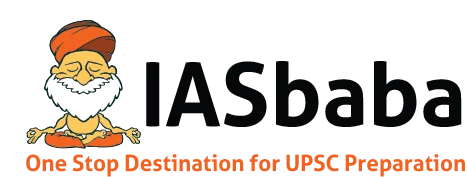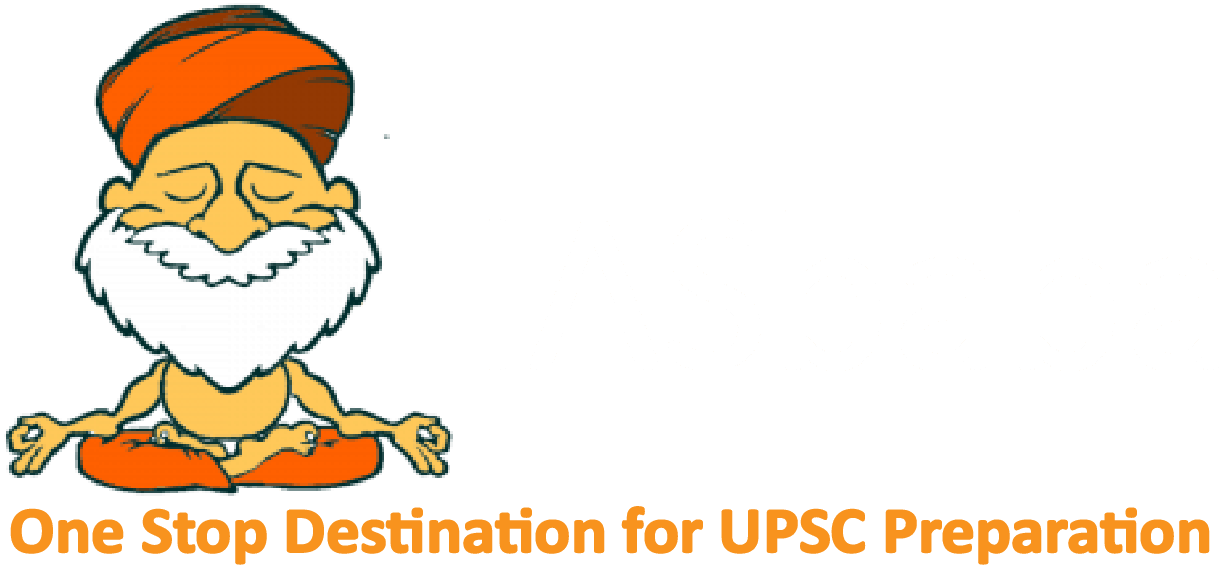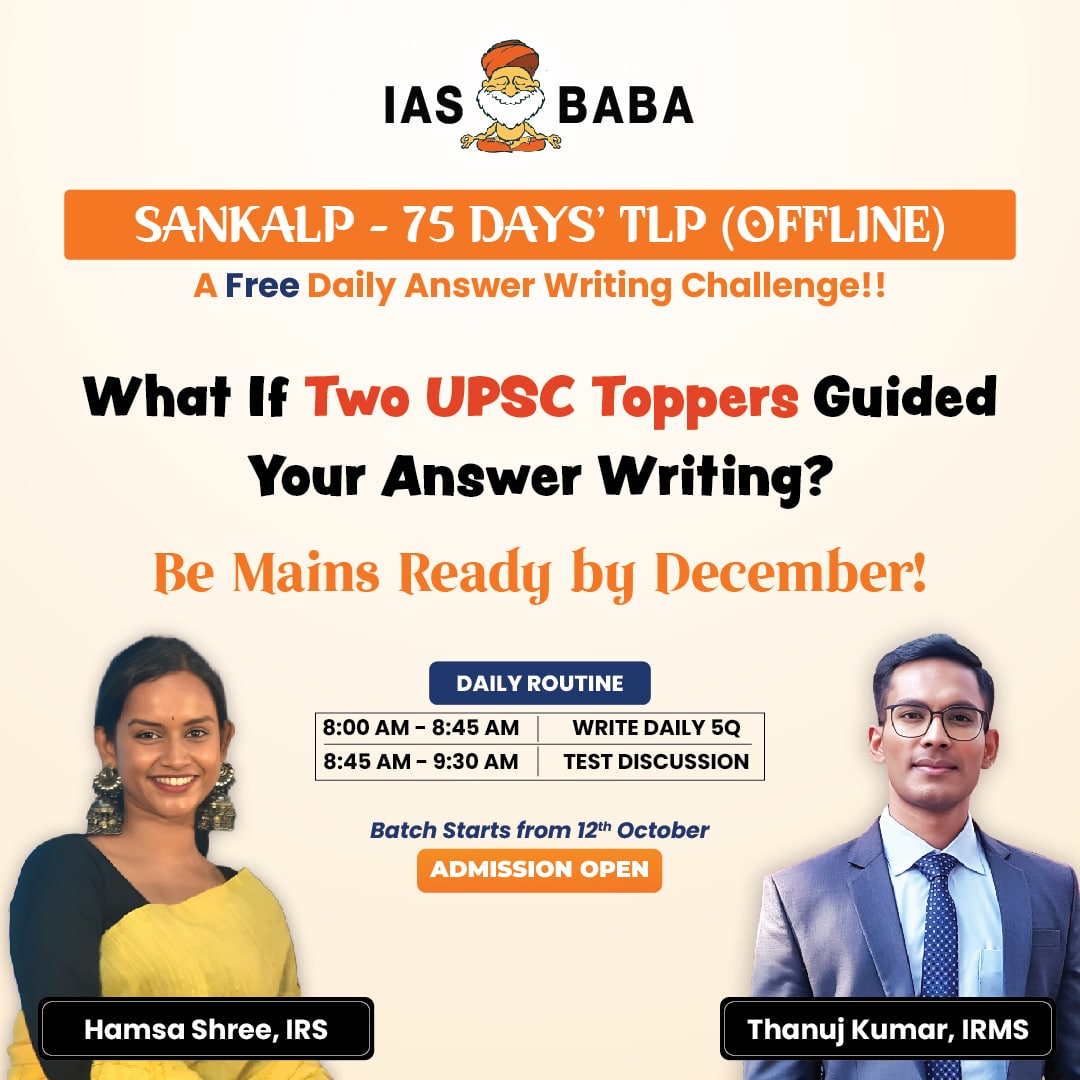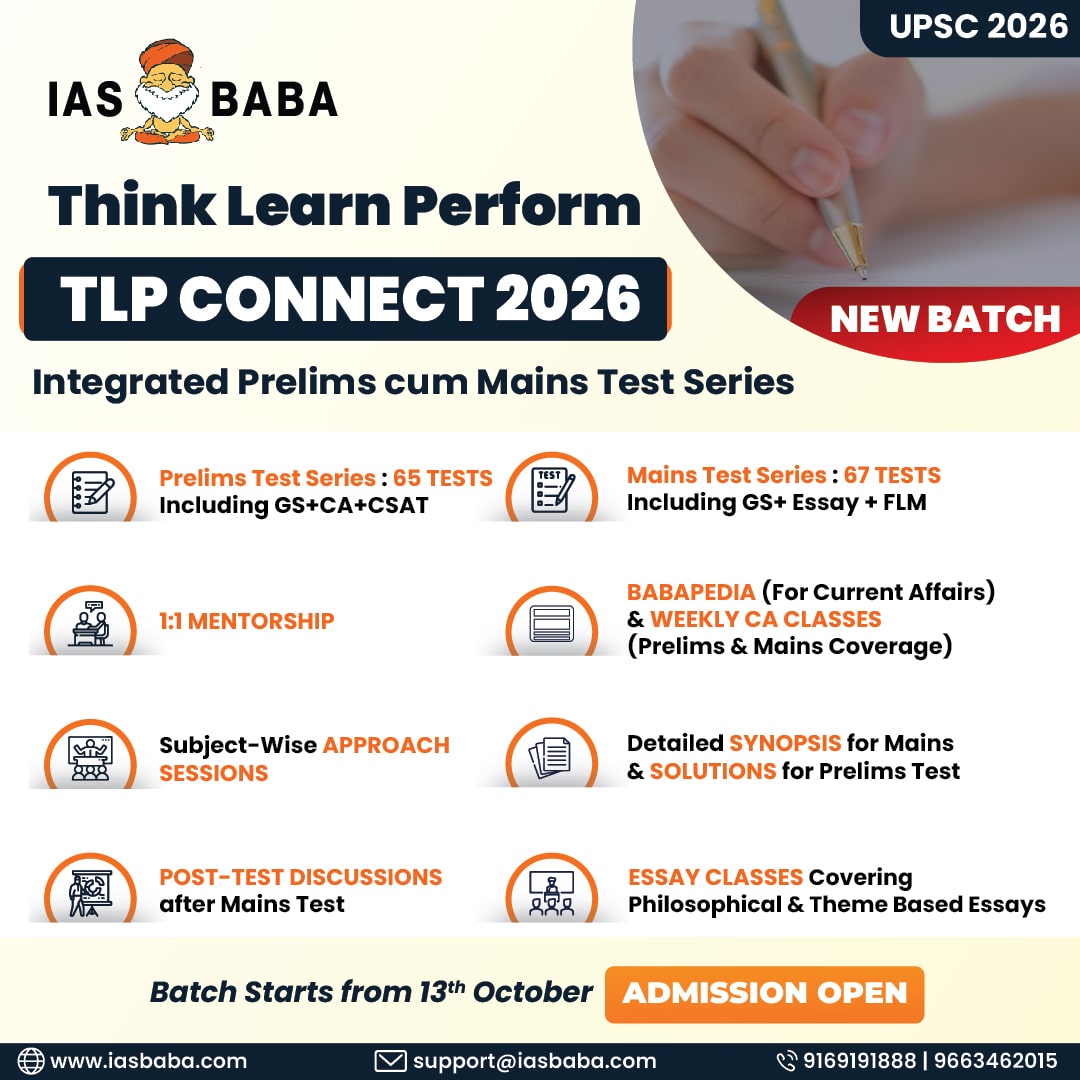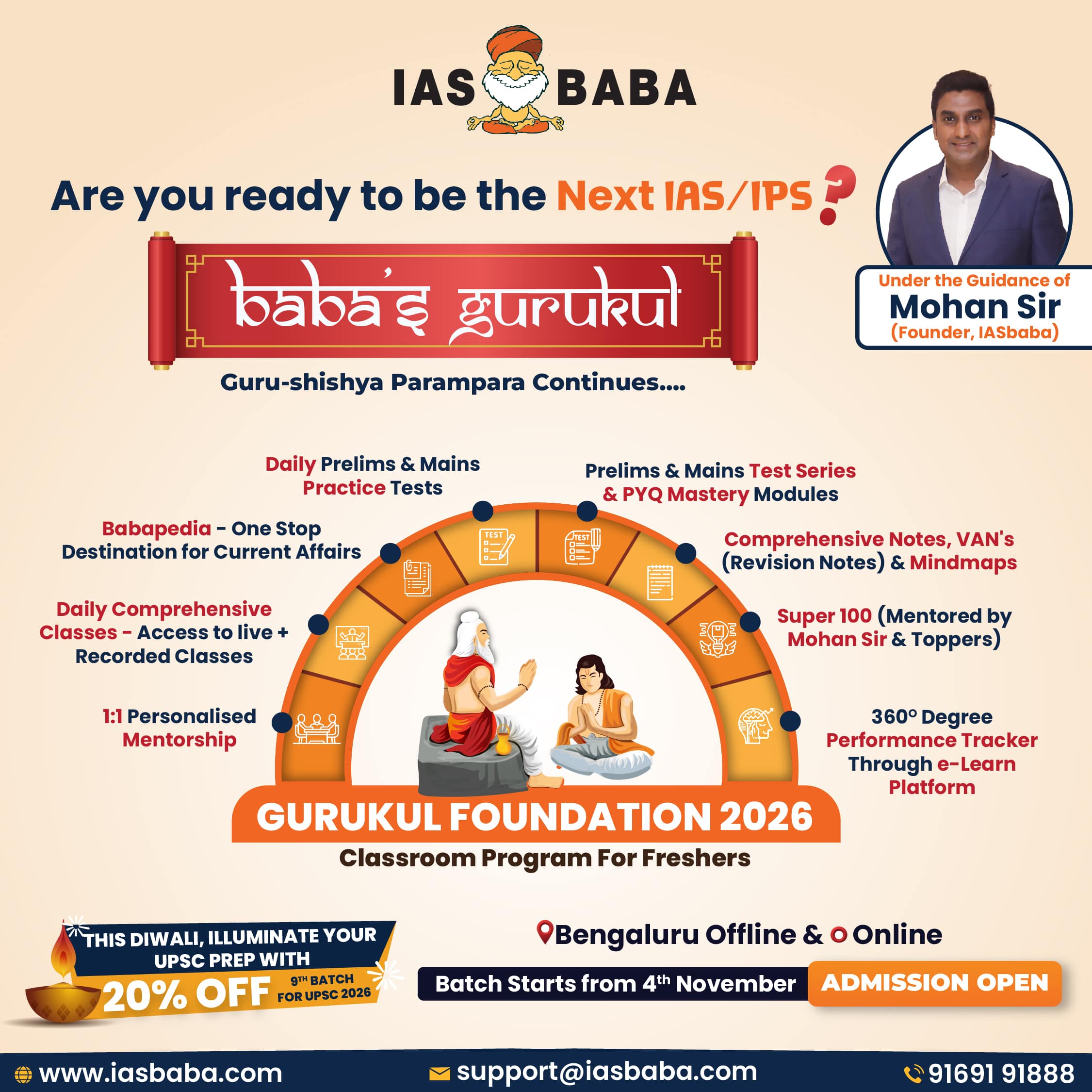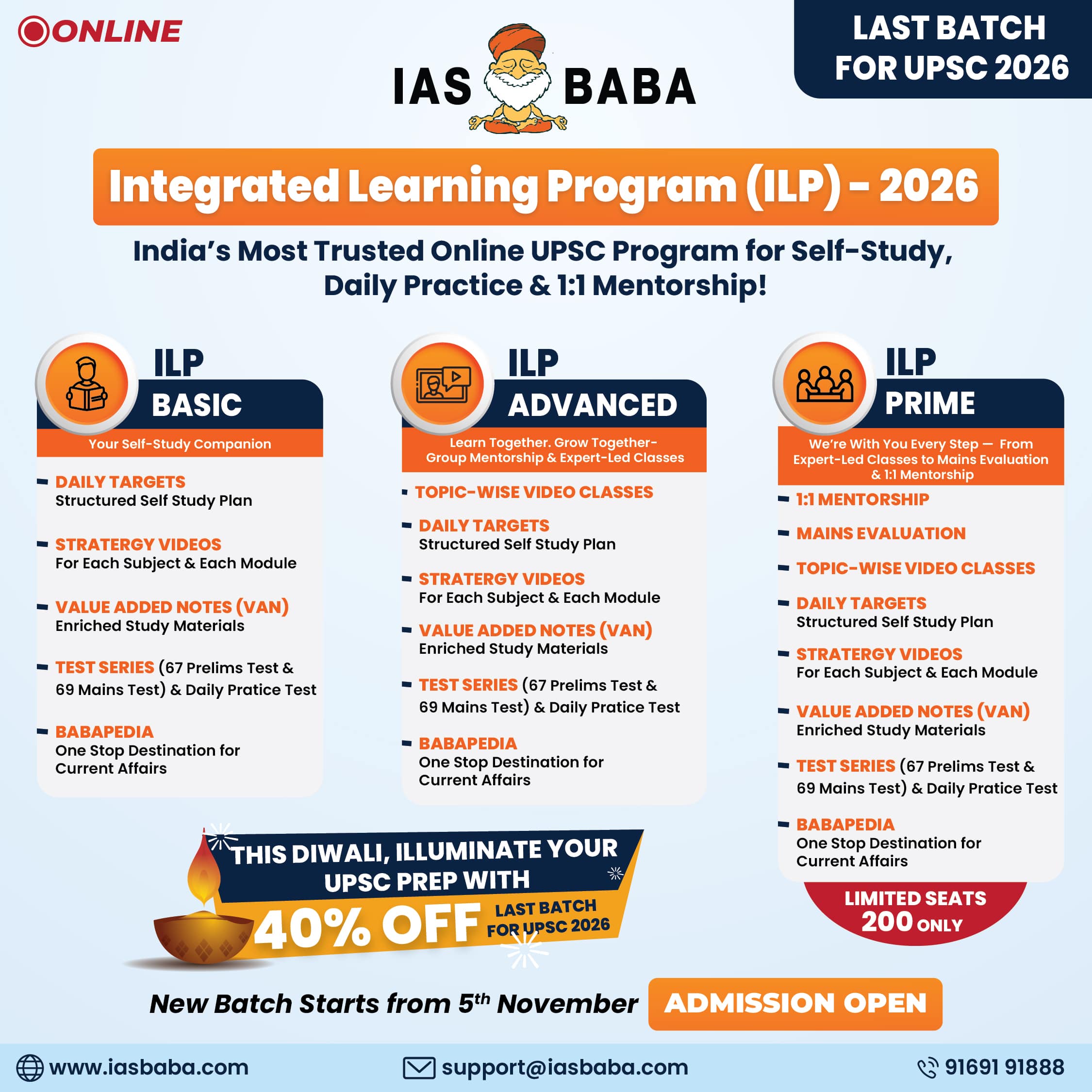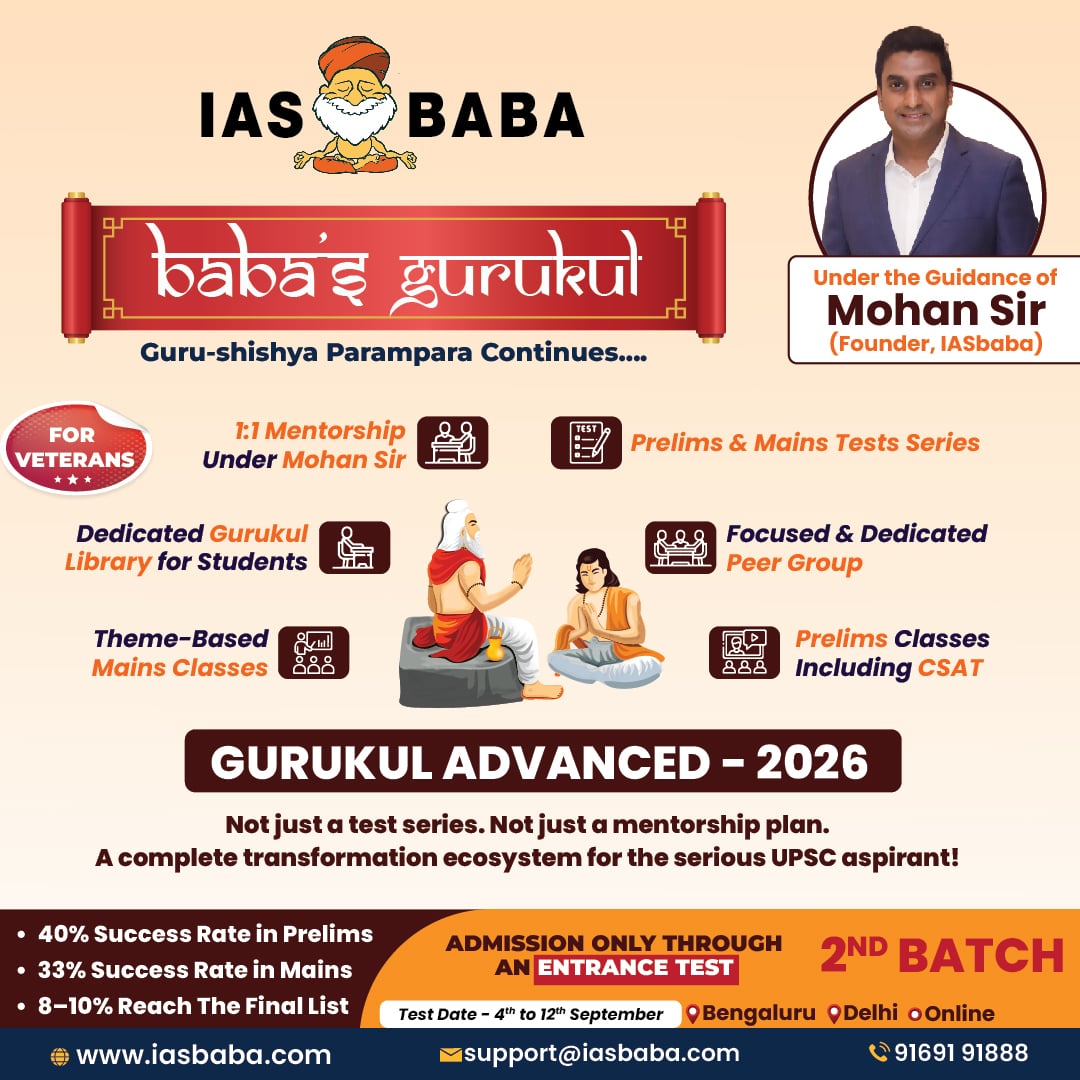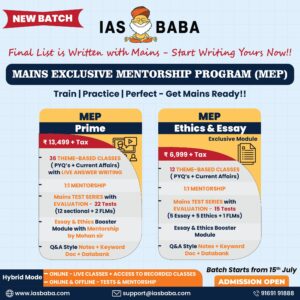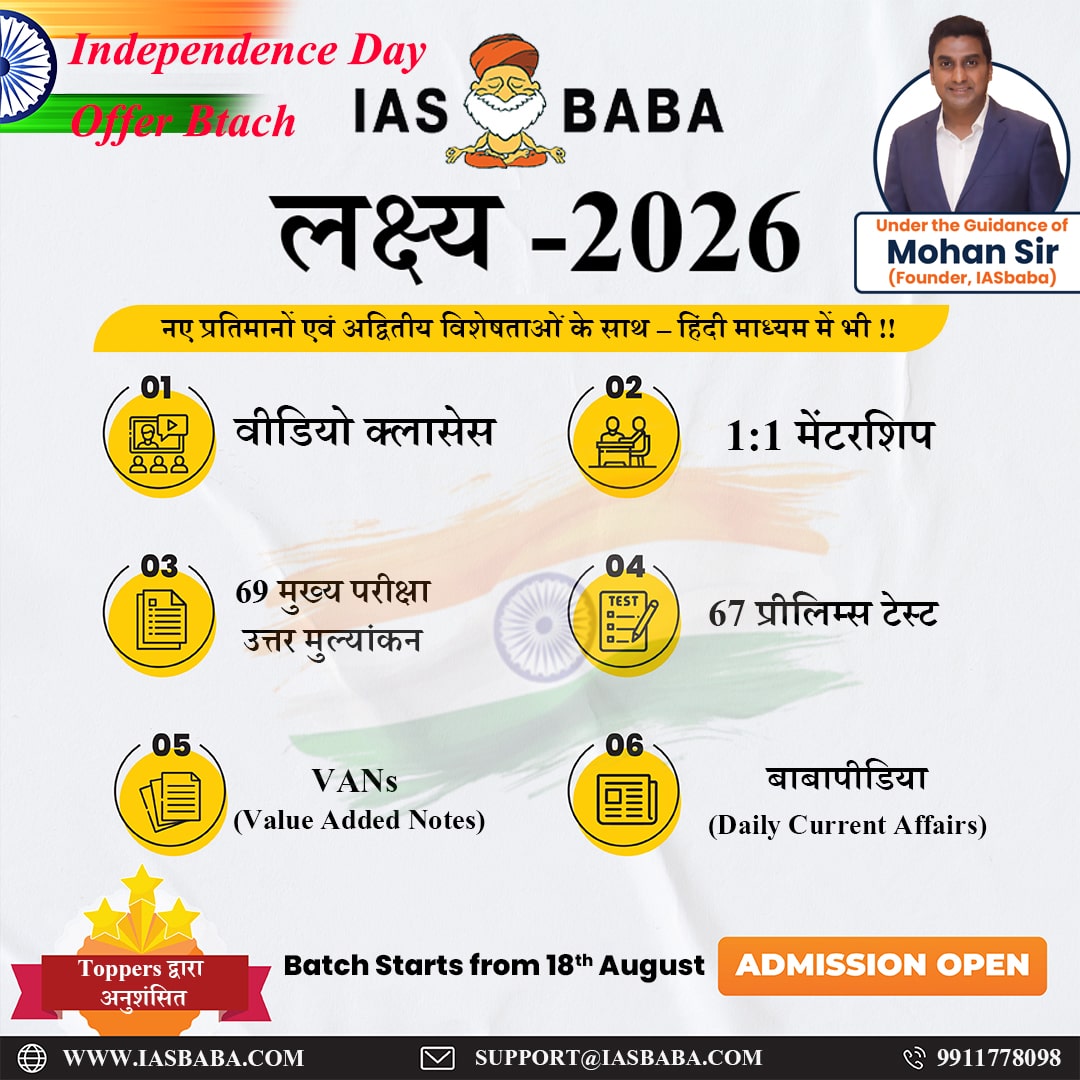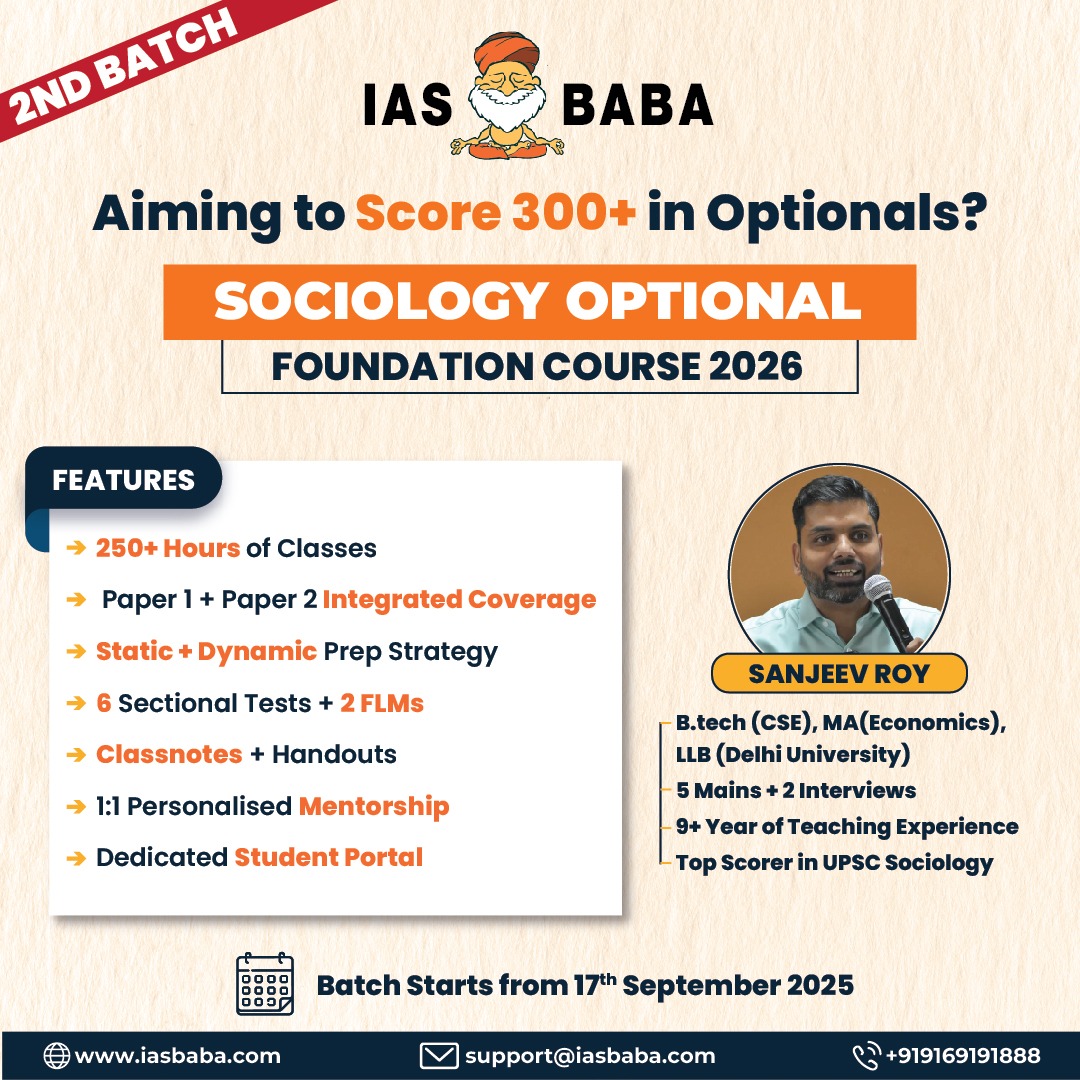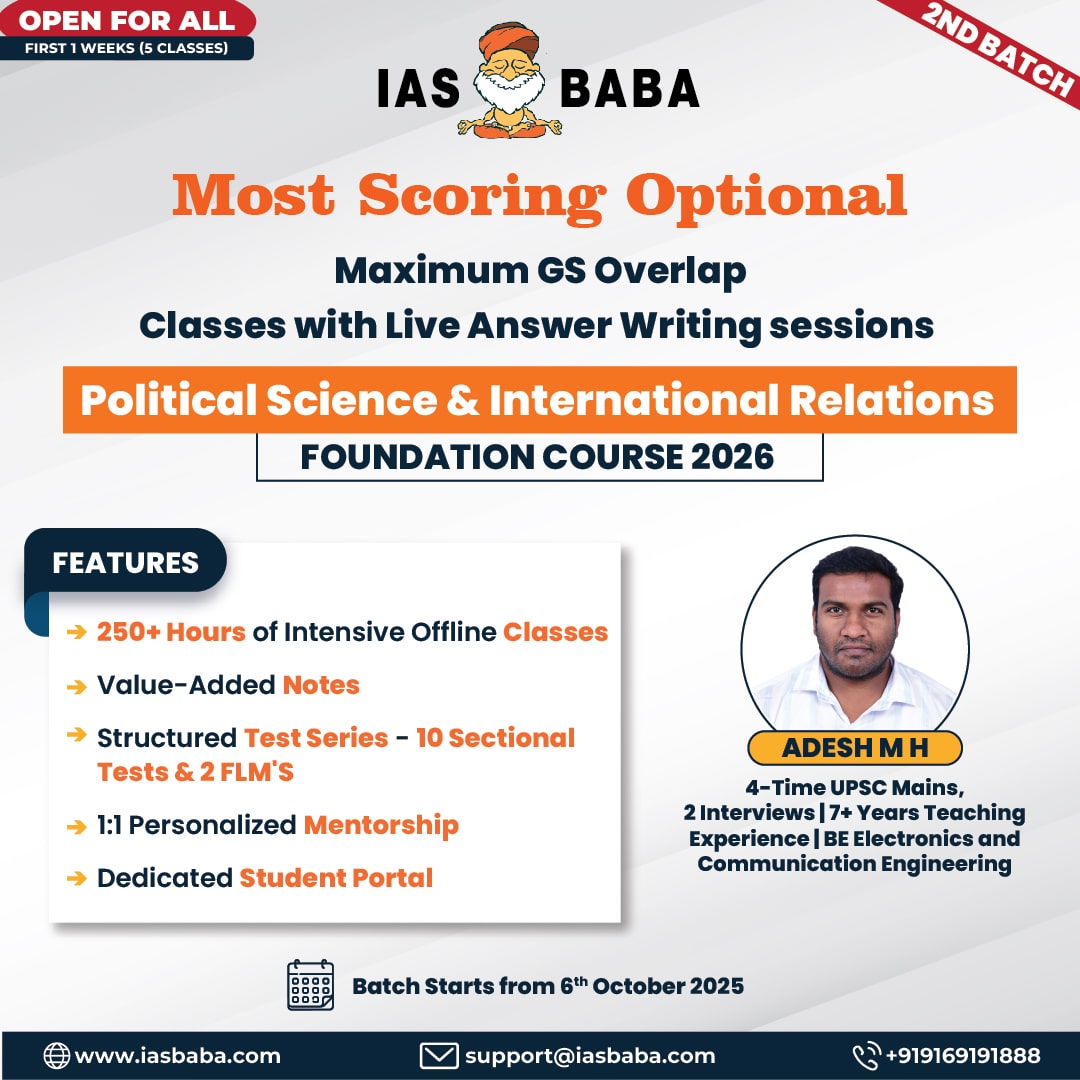IASbaba's Daily Current Affairs Analysis
Archives
(PRELIMS Focus)
Category: Geography
Context:
- The well-marked low pressure area over the Bay of Bengal, which is expected to become a cyclonic storm is likely to cause heavy rain, especially in north Tamil Nadu.
About Cyclones:
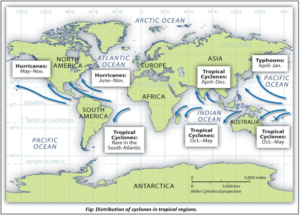
- Definition: Cyclones are rapid inward air circulation around a low-pressure area. Cyclones are usually accompanied by violent storms and bad weather.
- Nomenclature: The word Cyclone is derived from the Greek word Cyclos meaning the coils of a snake. It was coined by Henry Peddington because the tropical storms in the Bay of Bengal and the Arabian Sea appear like coiled serpents of the sea.
- Direction of air: The air circulates in an anticlockwise direction in the Northern hemisphere and clockwise in the Southern hemisphere.
- Types: There are 2 types of cyclones, viz. Tropical cyclones and Extra-Tropical cyclones.
About Tropical Cyclones:
- Definition: Tropical cyclones are violent storms that originate over oceans in tropical areas and move over to the coastal areas bringing about large scale destruction caused by violent winds, very heavy rainfall and storm surges.
- Uniqueness: Tropical Cyclones are one of the most devastating natural calamities in the world. Tropical cyclones originate and intensify over warm tropical oceans.
- Conditions required: The conditions favourable for the formation and intensification of tropical storms are:
- Large sea surface with temperature higher than 27° C.
- Presence of the Coriolis force.
- Small variations in the vertical wind speed.
- A pre-existing weak low- pressure area or low-level-cyclonic circulation.
- Upper divergence above the sea level system.
- Different names in different regions: They are known as Typhoons in the China Sea and Pacific Ocean; Hurricanes in the West Indian islands in the Caribbean Sea and Atlantic Ocean; Tornados in the Guinea lands of West Africa and southern USA.; Willy-willies in north-western Australia and Tropical Cyclones in the Indian Ocean.
- Naming of tropical cyclones: The naming of tropical cyclones is a recent phenomenon. The process of naming cyclones involves several countries in the region and is done under the aegis of the World Meteorological Organization (WMO).
About Extratropical Cyclones:
- Different names: Extratropical cyclones are referred to as mid-latitude depressions, temperate cyclones, frontal depressions and wave cyclones.
- Location: These are active above the mid-latitudinal region between 35° and 65° latitude in both the hemispheres.
- Uniqueness: The direction of movement is from west to east and more pronounced in the winter seasons. It is in these latitude zones the polar and tropical air masses meet and form fronts.
- Formation: The origin and development of temperate cyclones is best explained by the Polar Front theory.
Source:
Category: History and Culture
Context:
- Prime Minister Narendra Modi will lead the Rashtriya Ekta Diwas parade near Kevadia in Gujarat on October 31 to commemorate the 150th birth anniversary of Sardar Vallabhbhai Patel.
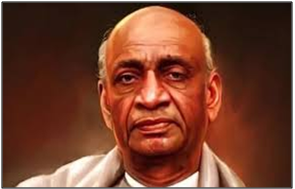
About Sardar Vallabhbhai Patel:
- Birth: He was born on 31st October 1875, in Nadiad, Gujarat.
- Career: He completed law studies in England, earning a prize in Roman Law, and returned to India as a barrister in 1913.
- Legacy: He is popularly known as the “Iron Man of India” for his determination and firm approach. He is revered as a symbol of national unity and resilience.
- Statue of Unity: In 2018, the Statue of Unity, the world’s tallest statue at 182 meters (600 feet), was inaugurated at Kevadia, Gujarat, honouring Sardar Vallabhbhai Patel. His birth anniversary is observed as National Unity Day (31st October).
- Contributions in the Indian National Movement:
- He played a pivotal role in Kheda Satyagraha (1918) demanding tax exemptions for farmers affected by crop failure due to drought.
- He led the resistance during the Bardoli Satyagraha (1928) against an unjust tax increase, earning him the title “Sardar” for his leadership.
- He played crucial role during Non-Cooperation and Civil Disobedience. He embraced Gandhi’s vision, leading actions like the Salt Satyagraha in 1930 and facing multiple imprisonments for his involvement.
- He chaired the 46th session of the Congress in 1931, navigating through the Gandhi-Irwin Pact discussions.
- He was arrested and imprisoned during Quit India Movement (1942).
- Role after independence of India:
- He was India’s first Deputy Prime Minister and Home Minister.
- He spearheaded the integration of 562 princely states into the Indian Union, securing stability and democracy for millions. The Indian Independence Act of 1947 allowed princely states to declare independence.
- He was instrumental in establishing the modern All India Services, strengthening the administrative framework of the country.
- He is remembered as the “patron saint of India’s civil servants” for his contribution to reinforcing the bureaucratic system.
- National Civil Services Day (21st April) honours Sardar Patel’s 1947 speech, calling civil servants “the steel frame of India” and reinforcing their dedication to public service.
- He led the Advisory Committee on Fundamental Rights, Minorities, and Tribal and Excluded Areas in the Constituent Assembly.
Source:
Category: Government Schemes
Context:
- The Gyan Bharatam Mission on manuscripts, will sign Memorandums of Understanding with around 20 institutes across the country for conservation, upkeep, and digitisation of manuscripts.

About Gyan Bharatam Mission:
- Launch: The Gyan Bharatam Mission was announced in Union Budget 2025-26.
- Objective: The mission’s mandate is to preserve and establish a dedicated digital platform, known as the National Digital Repository (NDR), to share India’s manuscript heritage worldwide.
- Nodal Ministry: It is a flagship initiative of the Ministry of Culture for identifying, documenting, conserving, digitising, preserving, and promoting India’s vast manuscript heritage.
- Importance: With over 44 lakh manuscripts documented in Kriti Sampada (National Database of Manuscripts), it preserves India’s civilisational knowledge spanning philosophy, science, medicine, mathematics, arts, literature, and spirituality.
- Establishment of dedicated cell: The cluster centres have been asked to constitute a dedicated Gyan Bharatam Cell experienced in each vertical, in the spirit of voluntary service, to represent the Centre with sincerity, while also serving as a vital channel of communication to foster collaboration and ensure smooth coordination.
- Components of the mission:
- Survey & Documentation: Nationwide identification and cataloguing of manuscripts.
- Conservation & Restoration: Safeguard fragile texts through scientific and traditional methods.
- Digitisation & Repository: AI-assisted digitisation and creation of a National Digital Repository.
- Technology & AI Innovation: Tools like Handwritten Text Recognition and Gyan-Setu AI Challenge.
Source:
Category: International Relations
Context:
- On 24 October, United Nations celebrated 80 years of establishment and reaffirmed the principles of the UN Charter.
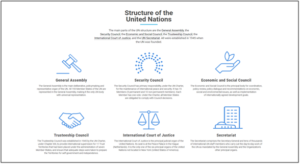
About United Nations:
- Nature: The United Nations (UN) is an intergovernmental organization that was established with the purpose of promoting international cooperation and maintaining peace and security among its member states.
- UN Charter: The Charter consists of a preamble and 111 articles grouped into 19 chapters.
- Evolution of UN:
- 1920: The League of Nations was an international organisation founded on January 10, 1920, as a result of the Paris Peace Conference that ended World War I.
- 1941: During World War II, representatives from 26 countries signed the Atlantic Charter, which called for the establishment of a post-war organization to promote international cooperation and prevent future wars.
- 1945: The UN was founded after the signing of the UN Charter by 51 countries on June 26th. The UN officially came into existence on October 24, 1945, after the ratification of the UN Charter by the majority of its founding members.
- Objectives:
- To develop friendly relations among nations
- To promote respect for human rights and fundamental freedoms
- To achieve international cooperation in solving economic, social, cultural, and humanitarian problems
- To serve as a centre for harmonizing the actions of nations.
- Headquarters: The headquarters of the UN is located in New York City.
- Membership: Over the years, the UN has grown to include 193 member states and has played a key role in many global issues, including peacekeeping, humanitarian aid, and human rights.
- Main organs of the UN:
- The General Assembly,
- The Security Council,
- The Economic and Social Council,
- The Trusteeship Council,
- The International Court of Justice, and
- The UN Secretariat.
About UN General Assembly:
- Role: The General Assembly is the main deliberative, policymaking and representative organ of the UN.
- Members: All 193 Member States of the UN are represented in the General Assembly, making it the only UN body with universal representation.
- Meeting: Each year, in September, the full UN membership meets in the General Assembly Hall in New York for the annual General Assembly session, and general debate, which many heads of state attend and address.
- Decision-making: Decisions on important questions, such as those on peace and security, admission of new members and budgetary matters, require a two-thirds majority of the General Assembly. Decisions on other questions are by simple majority.
- Election of its President: The President of the General Assembly is elected each year by assembly to serve a one-year term of office.
About UN Security Council:
- Role: It has primary responsibility, under the UN Charter, for the maintenance of international peace and security.
- Members: The Security Council is made up of fifteen member states, consisting of five permanent members—China, France, Russia, the United Kingdom, and the United States—and ten non-permanent members elected for two-year terms by the General Assembly on a regional basis.
- Criticism: The unconditional veto possessed by the five governments has been seen as the most undemocratic character of the UN. “Veto power” refers to the power of the permanent member to veto (reject) any resolution of Security Council.
Source:
Category: Environment and Ecology
Context:
- A recent scientific study has revealed that civet coffee (popularly known as Kopi Luwak), which is primarily produced from the excreta of the Asian palm civet, shows distinct when compared to naturally harvested robusta beans.
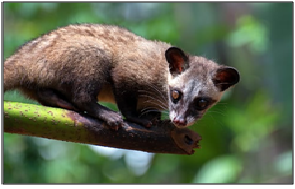
About Asian Palm Civet:
- Common names: The Asian Palm Civet, is also known as the Toddy Cat or Common Palm Civet.
- Distribution: It is a small, nocturnal mammal that is found throughout South and Southeast Asia, including India, Sri Lanka, Indonesia, and the Philippines.
- Scientific Name: It is a member of the Viverridae family, which also includes other civet and mongoose species. Its scientific name is Paradoxurus hermaphroditus.
- Physical features: It has a long, slender body, short legs, and a pointed snout. It weighs between 2 to 5 kg (4.4 to 11 lbs) and measures around 53 to 71 cm (21 to 28 inches) in length, including the tail.
- Behaviour: It is thought to lead a solitary lifestyle, except for brief periods during mating.
- Uniqueness: Its fur is brownish-grey with black spots, and it has a white mask-like marking around its eyes. Its anal scent glands emit a nauseating secretion as a chemical defence when threatened or upset.
- Nocturnal: It is a nocturnal animal and feeds on a variety of prey, including insects, small mammals, and fruits.
- Relevance in coffee industry: One of the most distinctive features of Asian palm civets is their ability to digest coffee beans, which makes them an important part of the coffee production process in some countries.
- Conservation Status: It is classified as ‘Least Concern’ under the IUCN Red List.
Source:
(MAINS Focus)
(GS Paper 2: Health Policies, Social Justice and Vulnerable Sections)
Context (Introduction)
The deaths of 25 children due to contaminated cough syrup highlight gaps in India’s pediatric drug regulation. Despite bans on unsafe formulations, inadequate monitoring, weak pharmacovigilance, and lack of India-specific pediatric guidelines compromise the health rights of children under Article 39(f) of the Constitution.
Current Challenges in Pediatric Healthcare
- Regulatory Gaps: CDSCO regulates large manufacturers; state drug officers handle smaller units. Oversight is inconsistent, contributing to unsafe drug distribution.
- Lack of Pediatric-Specific Guidelines: Children are “therapeutic orphans” as most clinical trials are adult-focused; dosage often extrapolated from adult medicine, risking overdosage.
- Over-the-Counter Medication Risks: Urban use of OTC drugs for cough, cold, and fever is common; caregivers often lack awareness of correct dosage and potential side effects.
- Inadequate Public Health Infrastructure: Public health outlets need strict guidelines and zero tolerance for substandard or substitute medications; monitoring teenage drug misuse is also required.
- Data Deficiency: Policies rely on foreign or adult-centric data; Indian pediatric pharmacogenetics and environmental factors (e.g., malnutrition) are largely ignored.
Legal and Policy Framework
- Child Protection Laws: India has ~13 child-specific policies (e.g., National Policy for Children 1974, India Newborn Action Plan 2014) and ~10 legislations (e.g., PC-PNDT Act, Aadhaar Act) targeting labor, sexual exploitation, and welfare.
- Limitations: Most focus on labor and protection from abuse; pharmacovigilance in pediatric medicine lacks robust policy and legal oversight.
- Global Comparison: EU has Paediatric Use Marketing Authorisation; USA operates Best Pharmaceuticals for Children Act. Both incentivize pediatric research. India lacks a comparable legislative framework.
Economic and Social Considerations
- Affordability: High healthcare costs push impoverished families further into poverty; essential pediatric medicines must be affordable.
- Essential Medicines Concept: WHO’s Essential Medicines List for Children (EMLc) guides priority healthcare needs; India’s EMLc updates are irregular, affecting availability and accessibility.
- Public Awareness: Education of caregivers and pharmacists on correct dosage, labeling, and adverse effect monitoring is critical.
International Lessons and Responsibilities
- Global Incidents: Contaminated pediatric syrups have caused deaths in Gambia, Uzbekistan, Indonesia, and Cameroon; India’s role as a pharmaceutical hub imposes responsibility for safe exports.
- Holistic Policy Needs: Adult medicines modified for children are off-label and unsafe; India requires a framework integrating safety, monitoring, and public education.
Reforms Suggested / Recommendations
- Robust Pharmacovigilance: Create specialized pediatric drug monitoring infrastructure at national and state levels.
- Legislation: Enact pediatric-specific drug laws with clear dosage, formulation, and safety standards.
- Research & Data: Promote India-centric clinical trials and pharmacogenetic studies for children.
- Public Awareness & Training: Mandatory training for caregivers, pharmacists, and public health workers on safe pediatric medicine practices.
- EMLc Updates: Regularly update India’s pediatric essential medicines list; ensure affordability and availability in public health systems.
Conclusion
Children are dependent and vulnerable; safeguarding their health requires proactive policy, rigorous regulatory oversight, and public awareness. India must establish a holistic, India-specific framework to prevent medical tragedies, ensure safe pediatric medicines, and uphold constitutional health rights.
Mains Question
- Examine the key challenges in the healthcare sector in India and suggest steps in alignment with the national health policy 2017 for an inclusive and sustainable health care. (250 words, 15 marks)
(GS Paper 2: International Relations – India and its Neighbourhoo)
Context (Introduction)
India’s engagement with ASEAN, initiated in 1992, has evolved from dialogue partnership to a Comprehensive Strategic Partnership by 2022. Amidst a multipolar and unstable geopolitical scenario, ASEAN is central to India’s Act East Policy and vision for a free, open, and inclusive Indo-Pacific (FOIIP).
Historical Evolution of India-ASEAN Ties
- Early Engagement: India became an ASEAN dialogue partner in 1995 and joined the ASEAN Regional Forum in 1996. The first ASEAN-India Summit in 2002 elevated relations.
- Strategic Upgrades: 2012 marked the 10th anniversary of summit-level partnership and India’s strategic partnership; 2014 saw the transformation of Look East Policy into Act East Policy under PM Modi.
- Commemorative Milestones: Celebrations included the ASEAN-India car rally, INS Sudarshini naval expedition, and leaders’ attendance at the 2018 Republic Day parade in Delhi.
PM Modi’s Role and Geopolitical Significance
- Consistent Leadership: Modi attended nine of 19 East Asia Summits, emphasizing ASEAN’s central role in regional stability.
- FOIIP Vision: India seeks a Free, Open, and Inclusive Indo-Pacific to counterbalance rising tensions between the US and China.
- ASEAN as a Linchpin: ASEAN mediates regional stability amid maritime disputes involving China and ensures cooperative approaches over rivalry.
Current Geopolitical Context
- Summit 2025: Leaders including US President Trump, Australia’s PM Albanese, and Japan’s PM Takaichi will attend; China and Russia will be represented by deputies. Modi will address virtually due to domestic commitments.
- ASEAN Expectations: ASEAN seeks deeper engagement from India in trade, development, and security; Malaysia’s PM Anwar Ibrahim maintains strong bilateral ties with India.
- Multipolar Challenges: US-ASEAN ties are strained; China’s regional assertiveness and maritime disputes underline ASEAN’s strategic importance to India.
Economic and Strategic Dimensions
- Trade and Development: Enhanced bilateral trade, capacity-building initiatives, and regional connectivity projects strengthen India-ASEAN cooperation.
- Security Cooperation: India’s role as a major Indian Ocean power complements ASEAN’s regional security framework; emphasis on collaborative multilateralism.
- Soft Power and Cultural Ties: Shared history, people-to-people linkages, and cultural diplomacy remain integral to the partnership.
Reforms / Recommendations
- Deepen Multilateral Engagement: Active participation in regional forums like EAS and IORA to shape Indo-Pacific governance.
- Enhance Economic Integration: Strengthen trade, investment, and technology collaboration with ASEAN nations.
- Focus on Security Cooperation: Joint maritime exercises, intelligence sharing, and capacity-building for regional stability.
- Cultural Diplomacy: Expand people-to-people, academic, and cultural exchanges to reinforce strategic ties.
Conclusion:
ASEAN is central to India’s regional strategy in a multipolar Indo-Pacific. Strengthening trade, security, and cultural engagement will enable India to act as a stabilizing force while countering geopolitical uncertainty, fulfilling Modi’s vision of a cooperative and inclusive Asia.
Mains Question
- Examine the evolution of India-ASEAN relations and assess India’s strategic and economic priorities in the Indo-Pacific region. How can India leverage ASEAN to strengthen regional stability and its Act East Policy?
